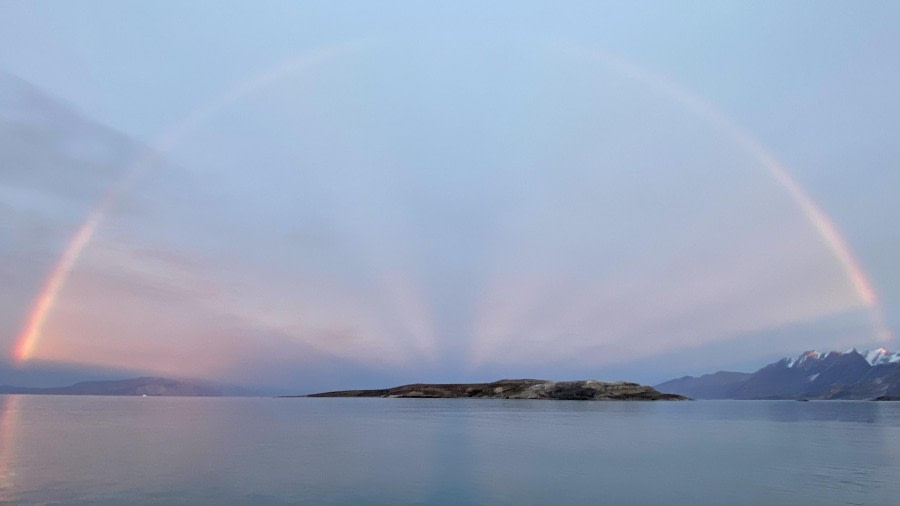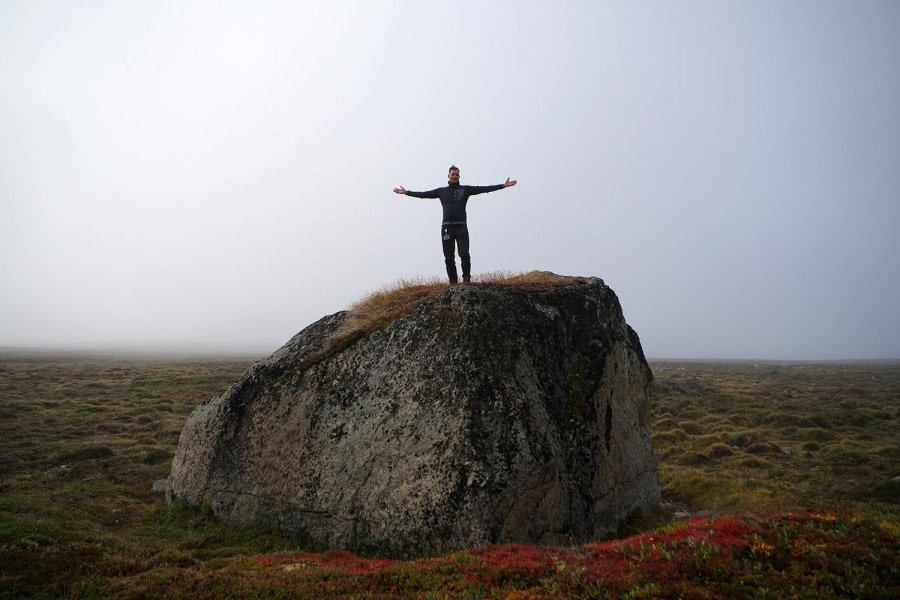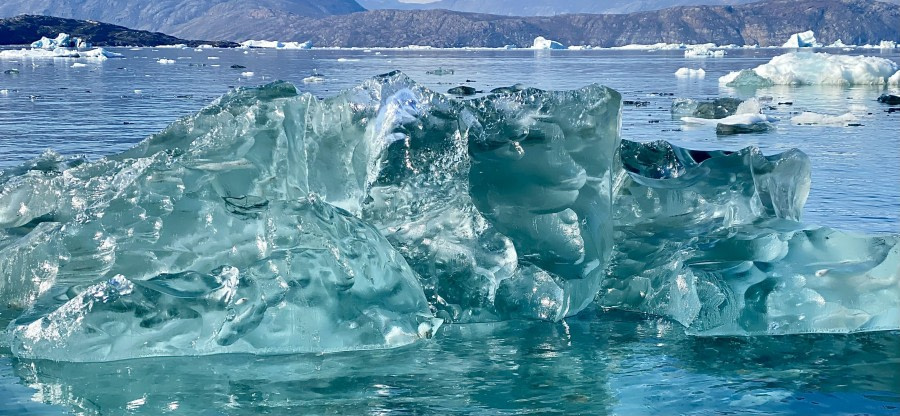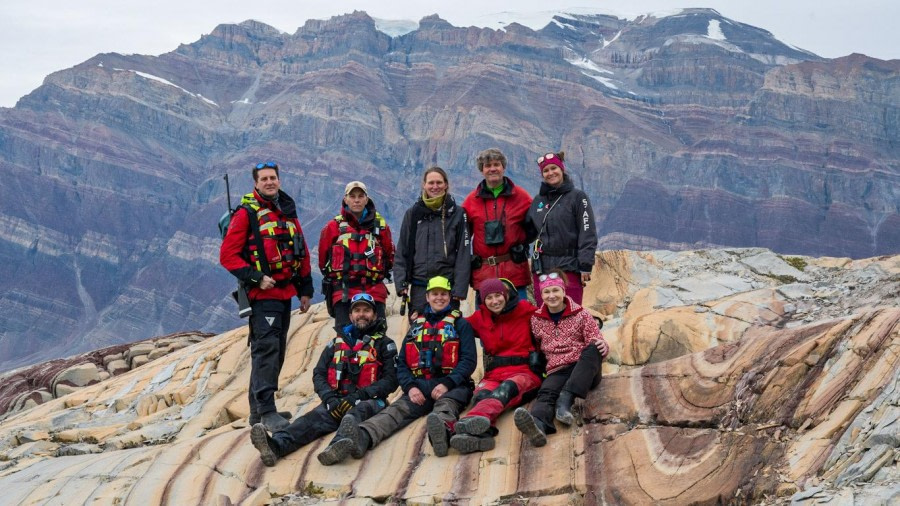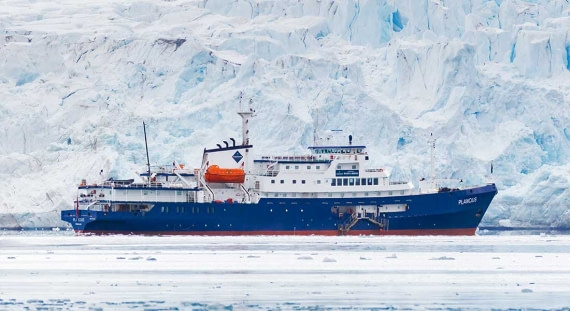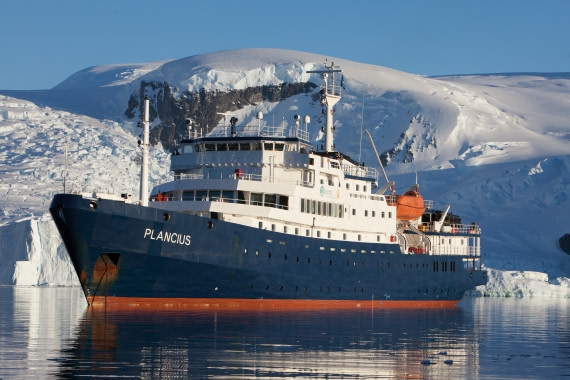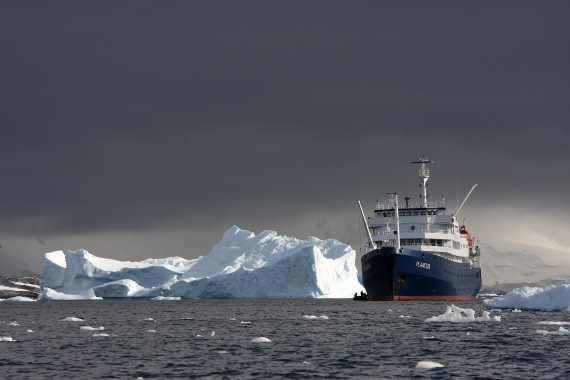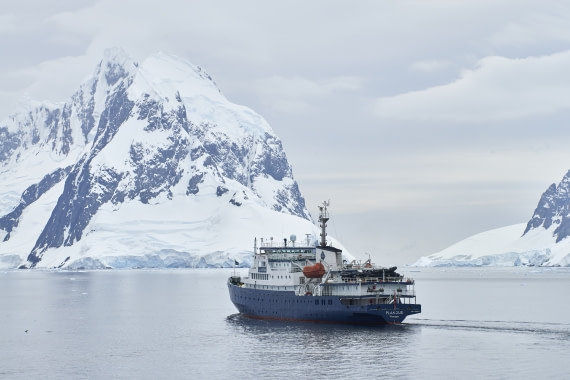| Datum: |
21.08.2023 |
| Positie: |
78°13.7’N / 015°36.1E |
| Wind: |
North-Easterly, Beaufort force 2 |
| Weer: |
Partial clouds |
| Luchttemperatuur: |
+6 |
It was 07:45 when our Expedition Leader Rinie gave us our first wake-up-call. It might have taken a short moment to realise where we were – far north on the lovely ship Plancius which we were now calling home.
This morning we had reached the northwest corner of Spitsbergen and during breakfast, the Captain himself was steering our ship through Sørgattet, the narrow passage south of Danskøya.
When we looked out of the windows of the dining room, we saw the stunning landscape, so right after breakfast we put on some layers and went outside to see the beautiful Smeerenburgfjord, and breath the fresh Arctic air. Over the PA, Expedition Leader Rinie told us that the still impressive glacier Smeerenburgbreen retreated a lot, and he remembered the time that the island in front of it, was still covered by ice. Having a closer look at the island, Irene, one of our guides, spotted two polar bears. It was a mother and her cub of last year. The ship sailed closer to get a better look, however, they were still difficult to observe, but with the help of our guides, we all managed to find them.
After a while it was time for the – because of the polar bears – postponed briefings. Rinie explained how safely to get in and out of the Zodiacs, how to behave around polar bears and the dos and don’ts on land.
Right after lunch it was time to get into the Zodiacs, ten boats cruised towards the island where mother and cub were relaxing. They didn’t mind us watching them, and except for some polar bear yoga, they didn’t move. But the Arctic is not only about polar bears, but the nearby glacier was also calling and as we approached, we were greeted with many species of birds flying and seals in the water.
Our next aim was Smeerenburgbreen, Michelle looked first and spotted an Arctic fox, being attacked by Arctic terns. Incredible how camouflaged these animals are, if it wasn’t because of the arctic terns, we would have difficulties to find it. Arriving in the ice at the glacier was exciting, and we could see so many different shades of blue and hear the air bubbles escaping from it. At 15:00h it was time to get back to the mother ship as we still wanted to visit the walruses on Smeerenburg.
Shortly before 17:00h we got into the Zodiacs again, half of the group would be taken to the walruses and half of the group would be taken to the historical remains of Smeerenburg. Smeerenburg was build 400 years ago as a whaling settlement and there is a lot to talk about it.
But suddenly, the plans changed again as there were again polar bears spotted, across Danskegattet on the island Danskøya, opposite of the island Amsterdamøya on which Smeerenburg is situated. This time it was a mother with her cub of this year. Instead of the history talk, the second half was taken towards the polar bears and after some time with the walruses and bears we swapped.
Incredible, what a day! We had only one day of Spitsbergen, but so much was experienced that it felt like much longer.
